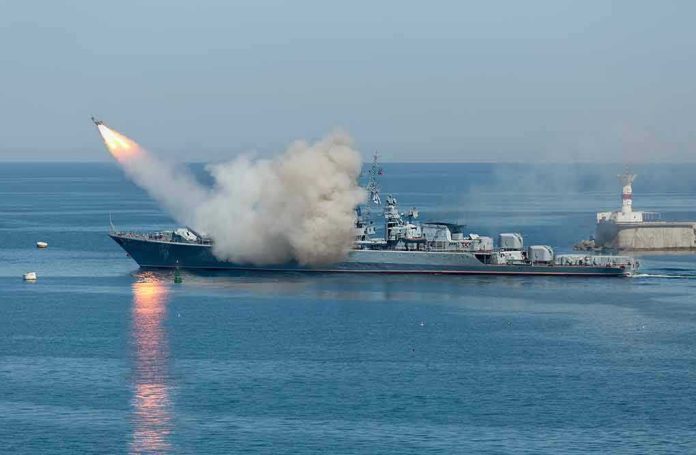
America’s defense contractors are racing to deploy AI-powered “killer robot boats” that can make lethal decisions without human oversight, sparking urgent concerns about accountability and the erosion of human control in warfare.
Story Highlights
- Defense startups have delivered 42 autonomous vessels in 18 months, with 100-foot and 150-foot “killer boats” planned for 2025
- Ukraine’s successful drone boat attacks proved autonomous maritime weapons can devastate enemy fleets without risking American lives
- Critics warn removing humans from lethal decisions could trigger accidental wars and undermine nuclear deterrence
- The U.S. Navy is briefing industry on massive new unmanned vessel programs emphasizing full autonomy
Defense Innovation Accelerates Under Trump Administration
American defense contractors are rapidly scaling autonomous naval capabilities as the Trump administration prioritizes military strength and technological superiority. Companies like HavocAI and Saronic are developing increasingly large unmanned surface vessels, with HavocAI planning a 100-foot autonomous warship by year’s end and Saronic targeting a 150-foot vessel. These developments represent a dramatic expansion from small drone boats to ocean-going autonomous warships capable of independent operations.
The rapid advancement reflects America’s commitment to maintaining naval dominance while reducing risks to service members. HavocAI CEO Paul Lwin stated that with mature software capabilities, the company is “going to put it on bigger and bigger boats.” This scaling demonstrates how American innovation is outpacing global competitors in autonomous maritime warfare technology.
Combat-Proven Technology Validates Strategic Investment
Ukraine’s successful deployment of Magura drone boats against Russian naval assets in the Black Sea provided real-world validation of autonomous maritime systems. These operations demonstrated that unmanned vessels can effectively engage enemy targets without putting American sailors at risk, aligning with conservative principles of protecting our military personnel while maintaining strategic advantages.
The U.S. Navy is capitalizing on these lessons learned, preparing industry briefings for new unmanned surface vessel programs emphasizing containerized payloads and commercial standards. This approach leverages private sector innovation while ensuring military requirements are met, reflecting the Trump administration’s preference for public-private partnerships over government-led development programs.
Constitutional Concerns Over Autonomous Lethal Authority
Defense policy experts raise serious concerns about delegating life-or-death decisions to machines without human oversight. Dan Grazier from the Project on Government Oversight warns that society needs to address machine-based lethal decisions “sooner, rather than later.” This touches on fundamental constitutional principles about accountability and the proper role of human judgment in warfare decisions.
Are killer robot boats coming to save us?https://t.co/HEHZXbd5Ab
— Responsible Statecraft (@RStatecraft) October 20, 2025
Arms control expert Michael Klare warns that autonomous systems could undermine nuclear deterrence by enabling real-time tracking that increases first-strike risks. These concerns reflect broader conservative values about maintaining human control over critical national security decisions while embracing technological advantages that strengthen American defense capabilities.
Sources:
Are killer robot boats coming to save us? – Responsible Statecraft
Naval drone startup HavocAI hopes to build 100-foot robot boat by year’s end – Defense One
Navy future USV program industry day – DefenseScoop
Autonomous AI war technology delivers killer robots – Mind Matters



